19 Property from a Distinguished European Family Collection Graham Sutherland Hydrant with Black Ground 1954 oil on canvas 132 x 60.6 cm (51 7/8 x 23 7/8 in.) Signed and dated 'Sutherland 1954' on the lower right. Further signed, titled, dated and inscribed 'G. Sutherland "Hydrant with Black Ground" 1954 Coll. Curt Valentin' on the reverse.
Provenance Curt Valentin, New York (as per the inscription on the reverse) Acquired by the family of the present owner Exhibited Torino, Galleria Civica d'Arte Moderna, Sutherland, October-November 1965, no. 99 Basel, Kunsthalle, Graham Sutherland Retrospective, 5 February-13 March 1966, Munich, Haus der Kunst, Graham Sutherland Retrospective,11 March-7 May 1967, no 46, then travelled to The Hague, Gemeentemuseum (June-July), Berlin, Haus am Waldsee (August-September), Cologne, Wallraf-Richartz Museum (October-November). Literature Sutherland, exh. cat., Galleria Civica d'Arte Moderna, Milan, 1965, no. 99 p. 228 (illustrated) Catalogue Essay Born in London in 1903, Graham Sutherland is rightly regarded as one of Britain’s most important painters in the twentieth century, realising a bridge between the playfully intellectual vernacular of Surrealism that openly deconstructed the subject and the more painterly, often highly-wrought lexis of the School of the London, which closely deconstructed the process. After eschewing a possible career as an engineer, Sutherland studied at Goldsmith’s College between 1920 and 1925, where he specialized as a printmaker. It is here that he immersed himself in the work of artists such as Samuel Palmer J.M.W. Turner and the First World War artist, Paul Nash Their landscapes, both literal and metaphysical, often described and unearthed dark narratives of the mind, revealing content closely aligned with the emptiness and pain of dislocation (of identity; of form; of place and, eventually, of meaning). This would have a telling influence on the young Sutherland; one that would resonate throughout his entire career. He would also become acquainted with, and heavily influenced, by the work of Henry Moore Moore’s negotiation of figuration and abstraction, and his quest to seamlessly fuse these two binaries, would equally inspire (and often infuriate) Sutherland. After being included in a handful of smaller exhibitions, Sutherland would go on to exhibit in the first International Surrealist Exhibition in London in 1936 and, two years later, would receive his first solo exhibition at the Paul Rosenberg and Helft Gallery in London. It is important to note that at the end of his studies Sutherland would convert to Catholicism. Thus we see a young man disengage with the prosaic, utilitarian dynamic of a ‘science’ like engineering and eagerly embrace a new religion; one that reverberated in spheres of pomp, ceremony and the mystical. Indeed, Sutherland would go on to execute a series of vital commissions for churches across the United Kingdom, culminating in his designs for the extraordinary tapestry Christ in Glory in the Tetramorph (1954-57) in Coventry Cathedral. In a sense, this nurtured the visual and intellectual elasticity of the artist’s subject and, indeed, his praxis, which was still, at this time, heavily influenced by Surrealism. It is, however, his activity as an Official War Artist, between 1940-41 and 1944 that would inform the artist’s most important works in the immediate period following the end of the Second World War. During this period Sutherland painted several scenes of bomb damage in London and of work in mines and foundries in Cornwall and South Wales; activities that supported the war effort. These images are all based on natural forms and become the bedrock on which Sutherland would develop his mature artistic language. Following on from a series of celebrated ‘Crucifixions’ (a perfect marriage of his Surrealistic inclinations; his devoted Catholicism and his ongoing interest in the physical) in the late 1940’s, the early 1950’s saw Sutherland create a number of works which he called Hydrants. These paintings were stimulated by the artist’s memories of the mines and foundries he had visited during the Second World War. These Hydrants would also allow Sutherland to explore the relationship between the organic and the man-made – two contrasting idioms and weltanschaungen whose co
19 Property from a Distinguished European Family Collection Graham Sutherland Hydrant with Black Ground 1954 oil on canvas 132 x 60.6 cm (51 7/8 x 23 7/8 in.) Signed and dated 'Sutherland 1954' on the lower right. Further signed, titled, dated and inscribed 'G. Sutherland "Hydrant with Black Ground" 1954 Coll. Curt Valentin' on the reverse.
Provenance Curt Valentin, New York (as per the inscription on the reverse) Acquired by the family of the present owner Exhibited Torino, Galleria Civica d'Arte Moderna, Sutherland, October-November 1965, no. 99 Basel, Kunsthalle, Graham Sutherland Retrospective, 5 February-13 March 1966, Munich, Haus der Kunst, Graham Sutherland Retrospective,11 March-7 May 1967, no 46, then travelled to The Hague, Gemeentemuseum (June-July), Berlin, Haus am Waldsee (August-September), Cologne, Wallraf-Richartz Museum (October-November). Literature Sutherland, exh. cat., Galleria Civica d'Arte Moderna, Milan, 1965, no. 99 p. 228 (illustrated) Catalogue Essay Born in London in 1903, Graham Sutherland is rightly regarded as one of Britain’s most important painters in the twentieth century, realising a bridge between the playfully intellectual vernacular of Surrealism that openly deconstructed the subject and the more painterly, often highly-wrought lexis of the School of the London, which closely deconstructed the process. After eschewing a possible career as an engineer, Sutherland studied at Goldsmith’s College between 1920 and 1925, where he specialized as a printmaker. It is here that he immersed himself in the work of artists such as Samuel Palmer J.M.W. Turner and the First World War artist, Paul Nash Their landscapes, both literal and metaphysical, often described and unearthed dark narratives of the mind, revealing content closely aligned with the emptiness and pain of dislocation (of identity; of form; of place and, eventually, of meaning). This would have a telling influence on the young Sutherland; one that would resonate throughout his entire career. He would also become acquainted with, and heavily influenced, by the work of Henry Moore Moore’s negotiation of figuration and abstraction, and his quest to seamlessly fuse these two binaries, would equally inspire (and often infuriate) Sutherland. After being included in a handful of smaller exhibitions, Sutherland would go on to exhibit in the first International Surrealist Exhibition in London in 1936 and, two years later, would receive his first solo exhibition at the Paul Rosenberg and Helft Gallery in London. It is important to note that at the end of his studies Sutherland would convert to Catholicism. Thus we see a young man disengage with the prosaic, utilitarian dynamic of a ‘science’ like engineering and eagerly embrace a new religion; one that reverberated in spheres of pomp, ceremony and the mystical. Indeed, Sutherland would go on to execute a series of vital commissions for churches across the United Kingdom, culminating in his designs for the extraordinary tapestry Christ in Glory in the Tetramorph (1954-57) in Coventry Cathedral. In a sense, this nurtured the visual and intellectual elasticity of the artist’s subject and, indeed, his praxis, which was still, at this time, heavily influenced by Surrealism. It is, however, his activity as an Official War Artist, between 1940-41 and 1944 that would inform the artist’s most important works in the immediate period following the end of the Second World War. During this period Sutherland painted several scenes of bomb damage in London and of work in mines and foundries in Cornwall and South Wales; activities that supported the war effort. These images are all based on natural forms and become the bedrock on which Sutherland would develop his mature artistic language. Following on from a series of celebrated ‘Crucifixions’ (a perfect marriage of his Surrealistic inclinations; his devoted Catholicism and his ongoing interest in the physical) in the late 1940’s, the early 1950’s saw Sutherland create a number of works which he called Hydrants. These paintings were stimulated by the artist’s memories of the mines and foundries he had visited during the Second World War. These Hydrants would also allow Sutherland to explore the relationship between the organic and the man-made – two contrasting idioms and weltanschaungen whose co
.jpg)
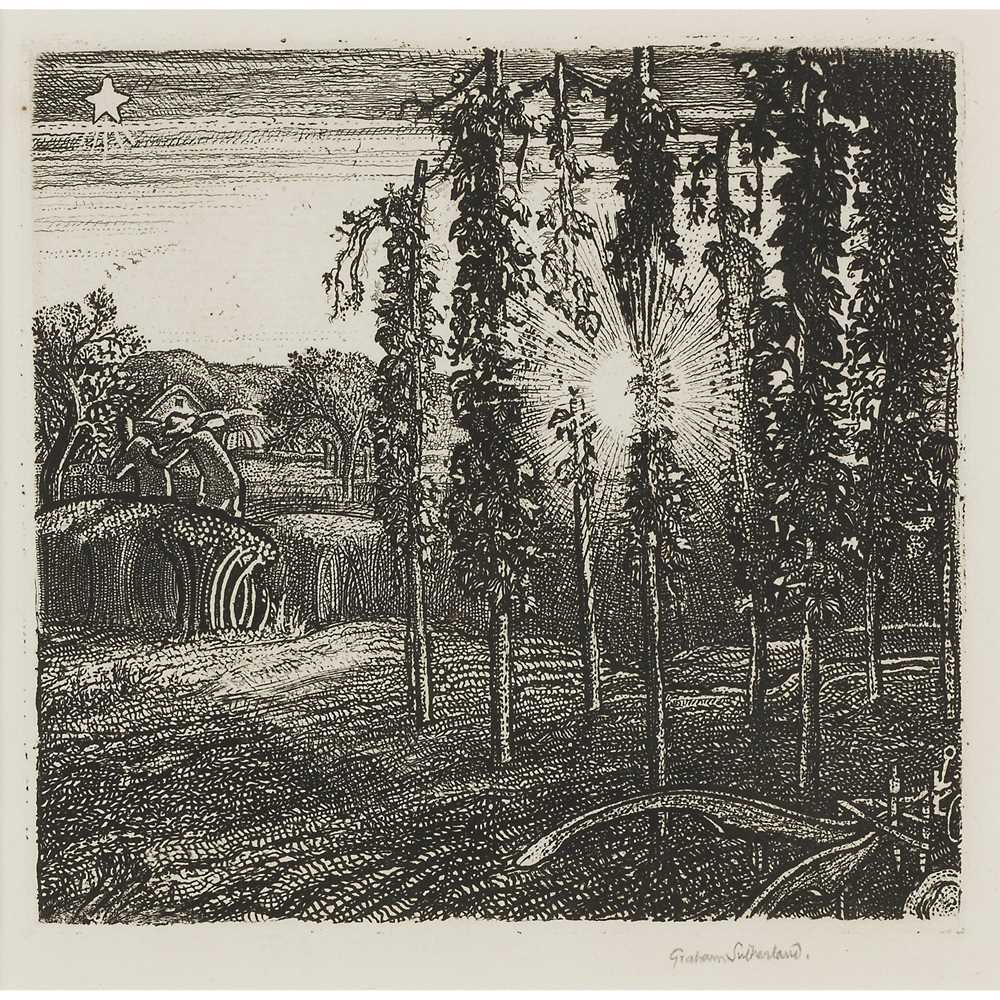
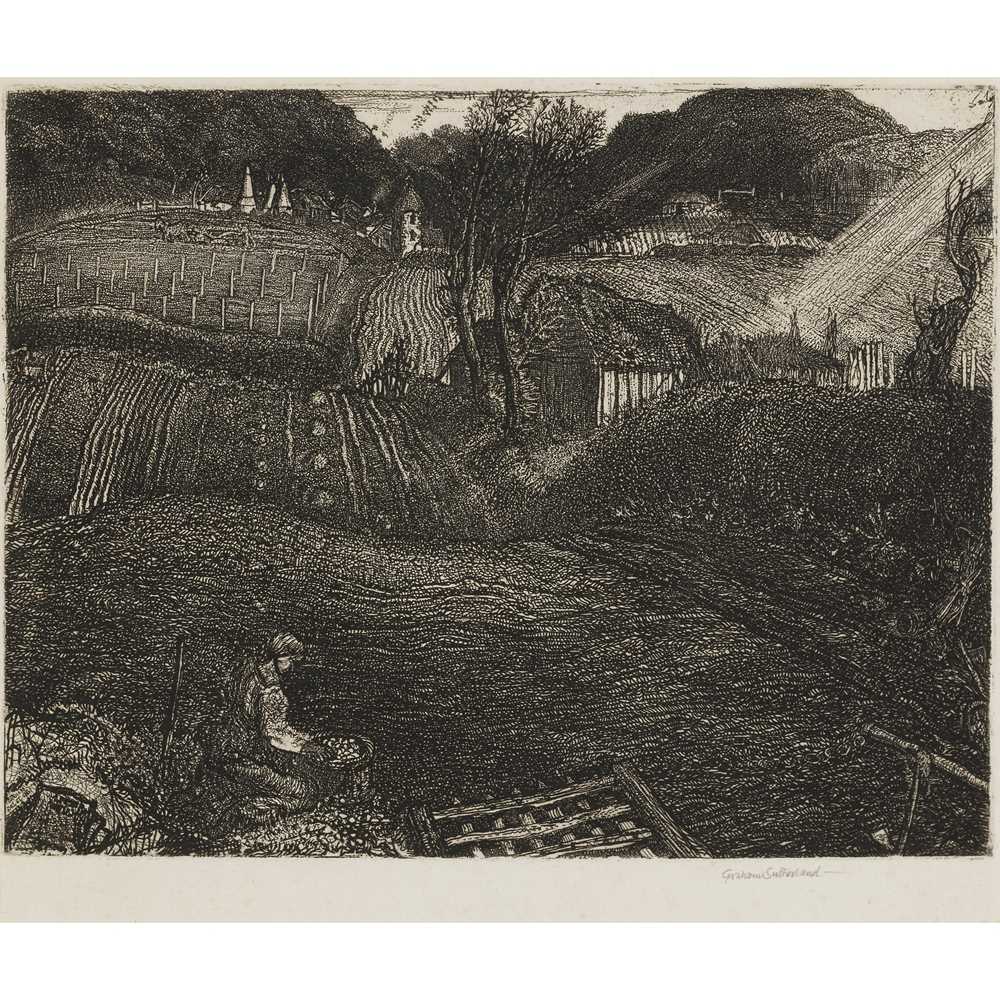
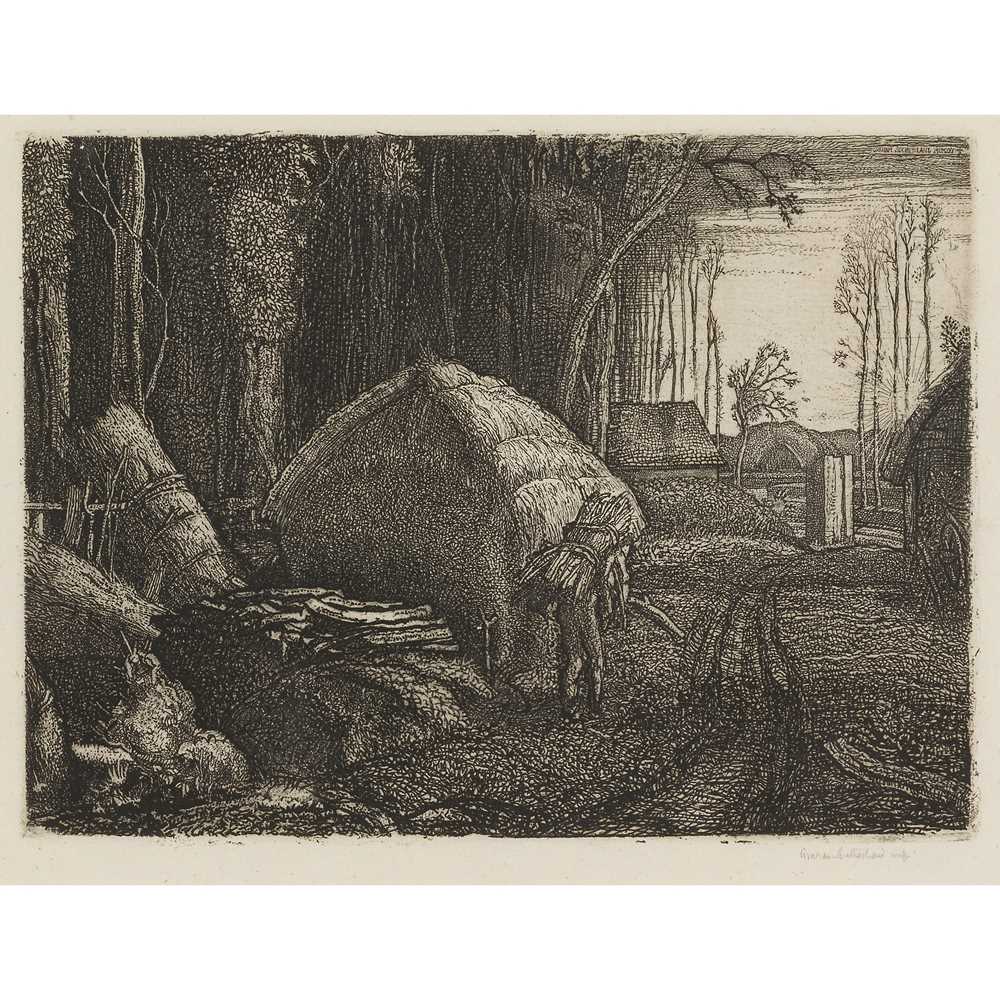

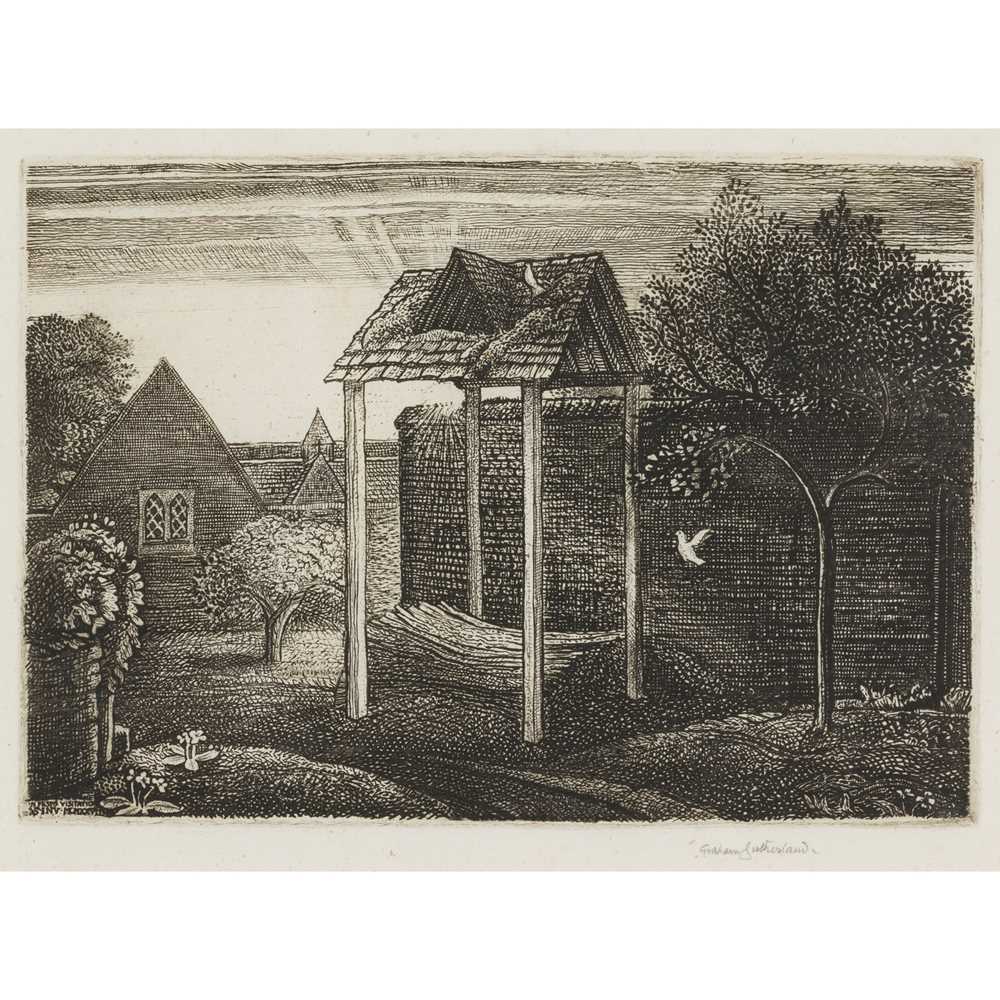
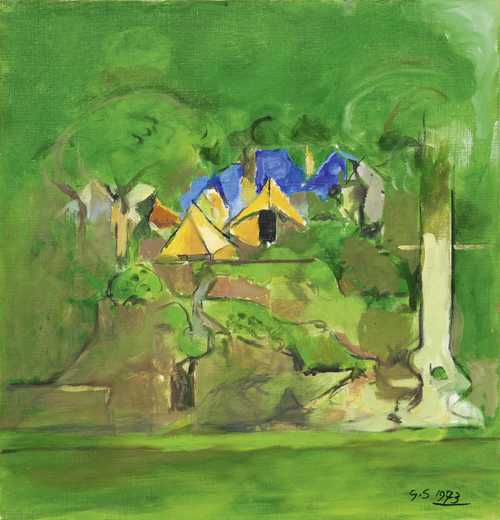








Testen Sie LotSearch und seine Premium-Features 7 Tage - ohne Kosten!
Lassen Sie sich automatisch über neue Objekte in kommenden Auktionen benachrichtigen.
Suchauftrag anlegen